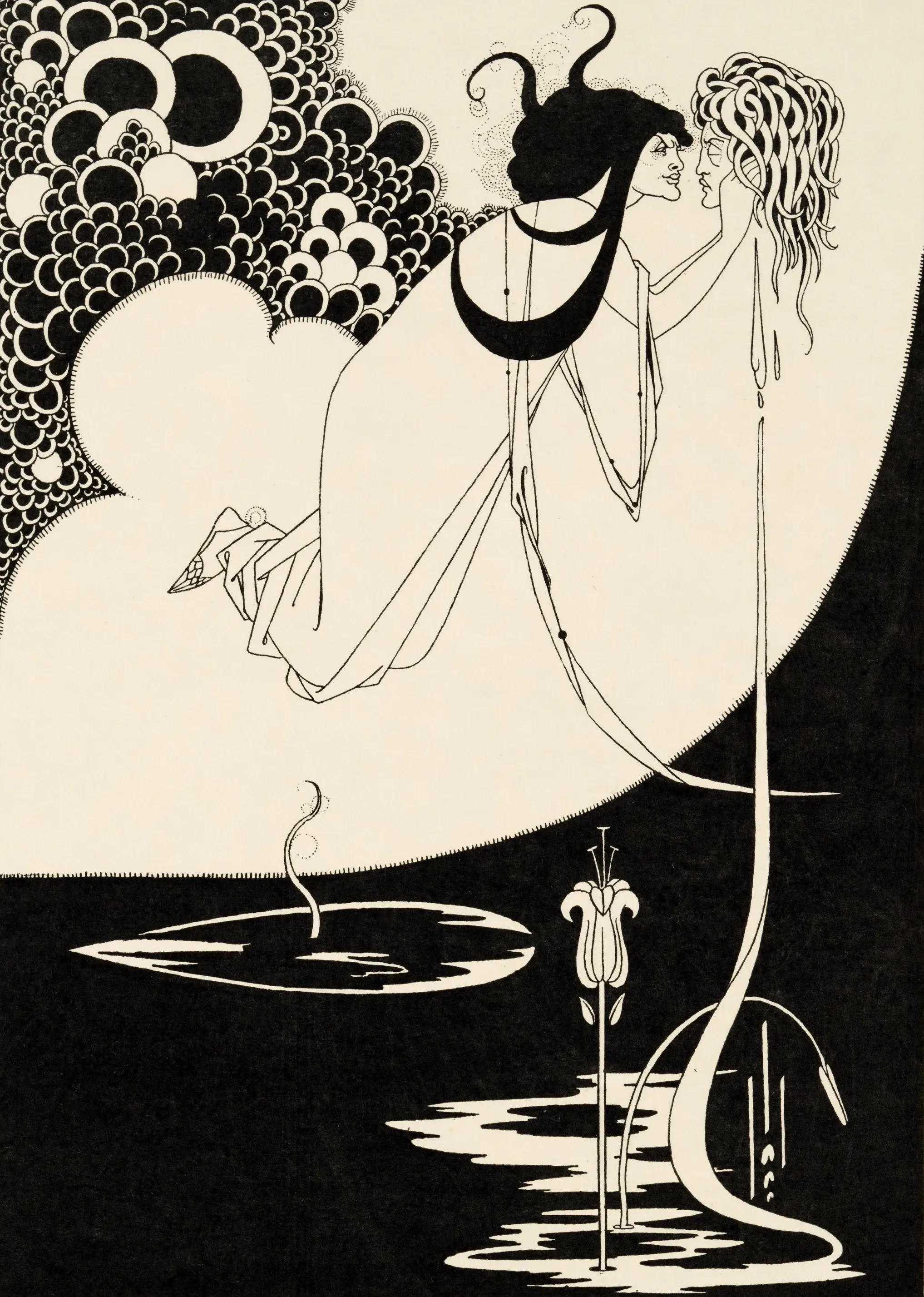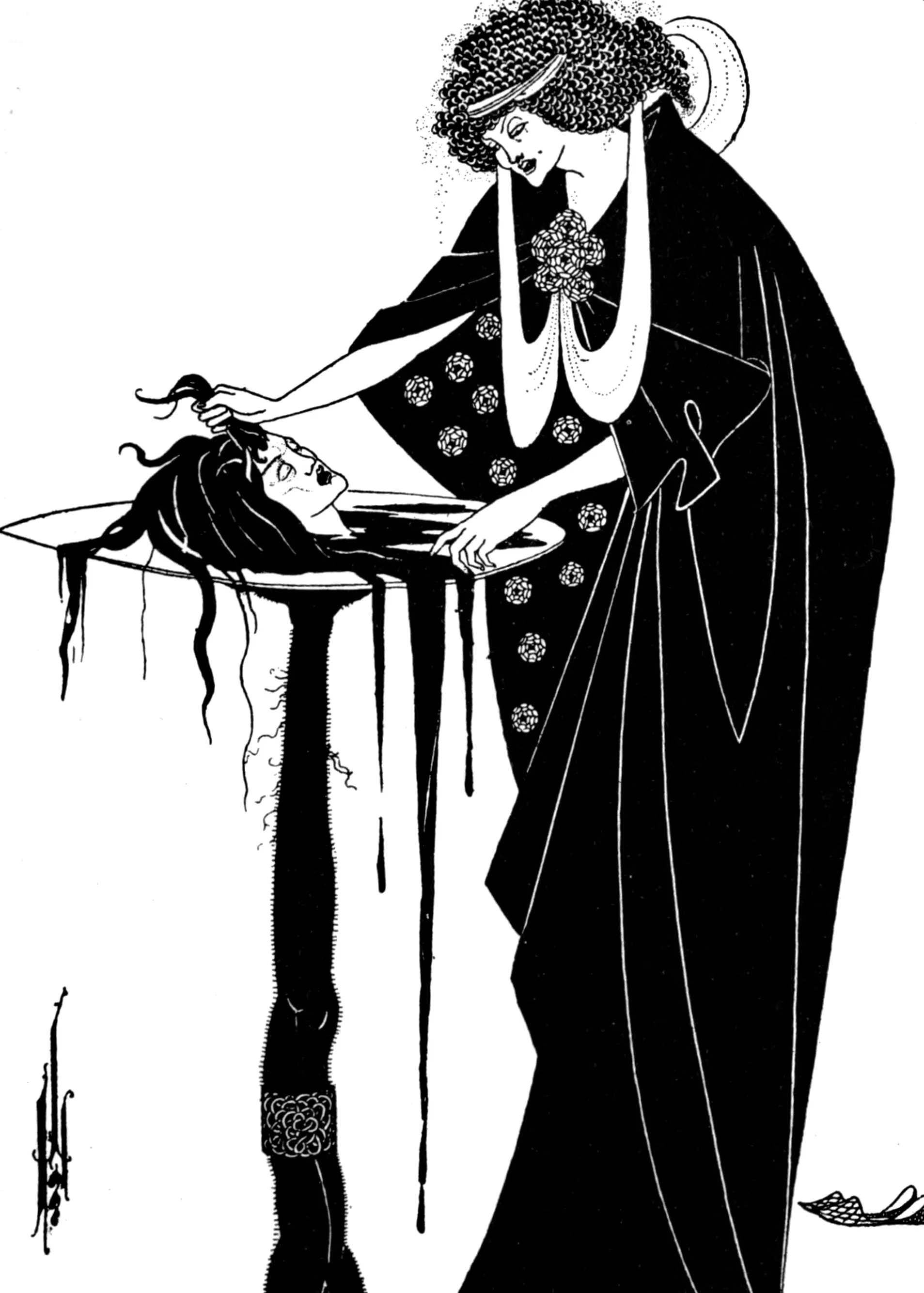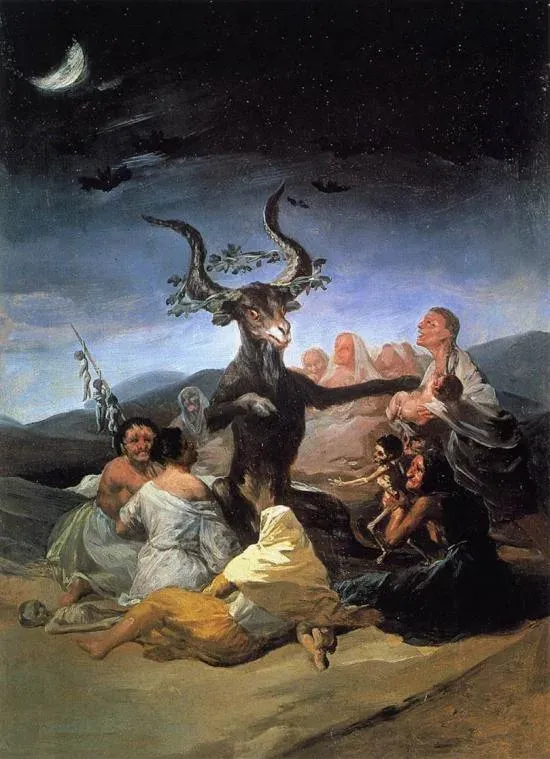Salomè by Oscar Wilde: A Masterpiece of Decadence and Beauty
Salomè by Oscar Wilde: A Masterpiece of Decadence and Beauty, first published in 1891, is one of the most fascinating and controversial works of decadent literature. Originally written in French, this drama is a perfect example of the fusion between literature and visual art that characterized the era, thanks also to the extraordinary illustrations by Aubrey Beardsley.
Plot and Main Themes
The story is based on the biblical figure of Salomè, the daughter of Herodias, who requests the head of John the Baptist as a reward for her dance of the seven veils. Wilde reinterprets the myth with a unique aesthetic and erotic sensitivity, highlighting themes of lust, obsession, and death.
Wilde’s Salomè is not just a seductress; she is a complex figure driven by an insatiable desire and a rebellion against social and religious norms. Her request for John the Baptist’s head represents an act of power and vengeance, a desire to possess what is forbidden to her.
Style and Language
Wilde’s language in “Salomè” is rich, poetic, and symbolic. Each sentence is imbued with multiple meanings and a decadent beauty that reflects his aesthetic vision. The choice of French, a language Wilde mastered perfectly, adds an additional layer of refinement and exoticism to the text.
 Aubrey Beardsley’s Illustrations
Aubrey Beardsley’s Illustrations
Aubrey Beardsley’s illustrations for “Salomè” are as famous as the text itself. Beardsley, with his unmistakable style of sinuous lines, meticulous details, and bold use of black and white, perfectly captures the decadent and sensual essence of Wilde’s work.
Style and Influence
Beardsley was a pioneer of Art Nouveau, and his illustrations for “Salomè” are a paradigmatic example of this style. His images evoke a world of unsettling beauty and subtle eroticism, perfectly in tune with the tone of Wilde’s drama.
 Iconic Images
Iconic Images
Among Beardsley’s most famous illustrations for “Salomè” is “The Peacock Skirt,” depicting Salomè in a sumptuous dress adorned with peacock motifs, symbols of vanity and beauty. Another iconic image is “The Climax,” showing Salomè with the head of John the Baptist on a plate, an image that combines horror and beauty in a sublime way.
Reception and Controversies
“Salomè” was received with scandal and fascination. Its representation of sexual and religious themes, combined with its bold aesthetic, made it a controversial work. Beardsley’s illustrations were criticized for their sensuality and provocative content but were also praised as masterpieces of graphic art.
 Legacy
Legacy
The collaboration between Wilde and Beardsley has left an indelible mark on the history of literature and art. “Salomè” continues to be studied and admired for its stylistic beauty and the depth of its themes. Beardsley’s illustrations remain a benchmark for graphic artists and Art Nouveau enthusiasts.
 Conclusion
Conclusion
Oscar Wilde’s “Salomè,” with Aubrey Beardsley’s illustrations, is a work that embodies the spirit of Decadence. The fusion of text and images creates a unique aesthetic experience that continues to enchant and provoke modern audiences. It is a journey into a world of extreme beauty, sensuality, and transgression, a masterpiece that shines with its own light in the landscape of Western culture.
This combination of drama and visual art is a perfect example of how literature and art can come together to create an unforgettable artistic experience. Wilde and Beardsley’s “Salomè” remains a lasting testament to the power of imagination and human creativity. Salomè: A Masterpiece of Decadence and Beauty!

Subscribe to our YouTube channel

 Aubrey Beardsley’s Illustrations
Aubrey Beardsley’s Illustrations Iconic Images
Iconic Images Legacy
Legacy Conclusion
Conclusion




